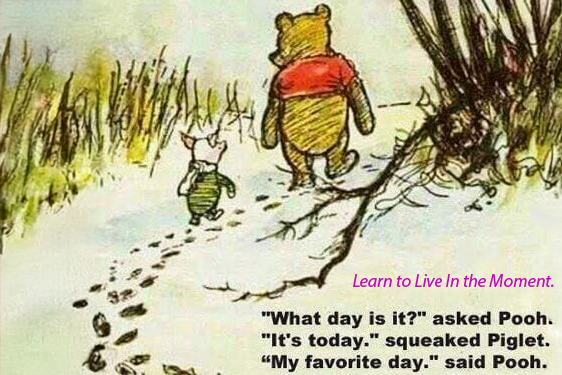
By Ree Winter
You’re strolling through a tranquil park, the sun warming your skin and a gentle breeze rustling the leaves. The world around you seems to slow as your footsteps echo in rhythm with your heartbeat. In that moment, you’re not just taking a walk; you’re taking a journey toward a healthier and happier you.
Walking is often overlooked in the world of fitness fads and high-intensity workouts. However, it is a simple yet potent activity that has the potential to transform your life. Unlike the high-octane promises of “get-fit-quick” schemes, walking quietly and unassumingly offers many health benefits that stand the test of time.
Walking for Physical Health
Whether you’re walking a dog, around the local park, or just around the block, studies have shown that this low-impact exercise has many health benefits. Walking improves cardiovascular health, which is essential not only to prevent heart disease but can also be used to recover after a cardiac episode. Research shows it improves conditions such as diabetes, high blood pressure, and high cholesterol in addition to aiding weight loss.
It also contributes to better bone health, reducing the risk of osteoporosis. However, if you have any form of arthritis, walking can also benefit you by lubricating the joints and improving the production of joint fluid—this will reduce stiffness and pain. However, listening to your body and starting off slow is essential to achieve your fitness goals.
“Many of my clients have noticed improvements in their energy levels, blood pressure, and even mood after incorporating consistent walking into their routines,” says Andrew White, a personal trainer of Garage Gym Pro. “One mistake I’ve seen beginners make is pushing themselves too hard at the onset. It’s crucial to start comfortably and gradually increase the intensity to prevent injuries.”
Surprising Benefits of Walking
You may have heard of the above benefits of walking before, but did you know that, according to Harvard, it has been shown to counteract the effects of weight-promoting genes, reduce the risk of developing breast cancer, boost immune functions, and reduce cravings for sweet things?
As for your mental health, walking offers benefits such as decreasing stress levels and increasing endorphins. “Walking offers a chance for reflection and awareness,” says Erik Brown of Treadmill Express. “Walking’s rhythmic motion can promote introspection and provide a break from the stresses of daily life, especially when accompanied by exposure to nature or a change of location.”
Also, Dr. Susan Bartlett, the chief medical advisor for AllTrails, says that one study has shown that even being outside for an hour daily improved memory in adults by 20%. Couple that with the benefits of walking and cardio exercise, and you have a win-win situation.
Calculating How Many Calories Burned Walking?
Several factors come into play to determine how many calories walking burns. Your weight, age, height, and the pace you walk at will all affect your individual results.
For example, to estimate the number of calories burned walking at a moderate pace (3 mph) for 30 minutes for a woman weighing 170 pounds (77kg), you can use this formula:
Calories Burned = MET (Metabolic Equivalent of Task) x Weight (in kg) x Time (in hours)
- Calculate MET: Walking at a moderate pace (around 3 mph) has an approximate MET value of 3.9
- Convert weight to kilograms: 170 pounds = 77.11 kilograms
- Convert time to hours: 30 minutes = 0.5 hours
So, for a woman who is 35 years old, weighs 170 pounds, and walks at a moderate pace for 30 minutes, she would burn approximately 150.73 calories during that walk. If this calculation is too much of a headache, just remember that 30 minutes of brisk walking will burn between 100 and 200 calories, depending on your weight. If you do this five days a week, that translates to 500 and 1000 calories.
Natalie Butler, a nutrition coach, weight loss specialist, and founder of Glow Up Nutrition & Lifestyle Coaching, lost 88 pounds by incorporating walking into her routine. “Walking helps to maintain muscle, which is usually lost when people are in the weight loss phase. Muscle is metabolically active and burns more calories throughout the day. By walking, a person burns more calories easily than someone more sedentary.”
Calories Burned Walking for Weight Management
Understanding the calories burned walking holds particular significance for individuals embarking on a weight loss journey. The beauty of incorporating walking into your routine lies in its effectiveness as a sustainable approach to weight management. Beyond the simplicity of putting one foot in front of the other, walking becomes a powerful tool for calorie expenditure, aiding in achieving and maintaining a healthy weight.
For those of us who aren’t into fitness, the very word “exercise” can promote feelings of disgust. However, incorporating something as simple as walking around the block while admiring nature is pleasant and beneficial. This type of exercise can feel like a treat rather than a chore.
As you gradually increase the duration and intensity of your walks, you create a consistent calorie deficit, a fundamental element for weight loss. The impact goes beyond the numbers on the scale, influencing overall well-being by promoting cardiovascular health, improving metabolism, and preserving lean muscle mass.
Walking Challenges and Caloric Goals
Setting personal challenges, like aiming to burn a certain number of calories during a walk, can add a motivating aspect to your routine. As you progressively increase the intensity of your walks, the calories burned walking become a tangible measure of your fitness achievements.
The important thing to remember is to start with small, buildable goals. Starting with manageable objectives ensures you build a solid foundation and progressively work towards more ambitious caloric targets. This approach makes your fitness journey sustainable and allows you to celebrate each milestone, reinforcing a positive and rewarding connection with your walking routine.
Incorporating Walking Into Your Routine
Aim for at least 30 minutes on most days of the week to reap the health benefits of walking. Always prioritize safety; consult your doctor before starting a new exercise program if you have any medical conditions.
Sometimes, the thought of spending 30 minutes on continuous exercise can be daunting. The good news is you can do it in stages. Just a ten-minute walk around the block three times a day is enough to start. You can gradually increase the duration as your fitness improves.
Incorporate walking into your daily life by choosing activities like taking the stairs, walking to work, or simply walking the dog.
Timing is flexible; you can walk at any time of the day that suits you best. The health benefits remain consistent regardless of the time.
Starting a Walking Routine
In the initial weeks, focus on establishing a good foundation with three 10-minute walks daily, emphasizing consistency. As stamina builds, transition into weeks 3-4 by extending each walk to 15 minutes, slowly incorporating variety. Weeks 5-6 introduce intervals of brisk walking, enhancing calorie burn and adding a dynamic element.
Progress into weeks 7-8 by incrementally extending one walk to 20 minutes, maintaining overall variety. Aim for 25-minute walks in weeks 9-10, approaching the coveted 30-minute mark. Finally, weeks 11-12 solidify the routine with daily 30-minute walks.
This is a sample routine for absolute beginners. If you believe your fitness level can handle more than this, follow the timeline but increase the speed and/or time.
Remember not to push yourself to the point where it’s no longer enjoyable. What we’re trying to create here is both exercise and leisure time, making exercise something that you look forward to as part of your day.
Monitoring Your Progress
Consider using a pedometer to measure your daily steps. The recommended goal is 8,000 steps or more for optimal health benefits. As your fitness improves, you can increase the intensity of your walks by adding elements like hills, hand weights, quick walking intervals, or longer distances.
Alison Sizemore of Couture Fitness Coaching recommends tracking how many steps you’re doing. “If you aren’t getting somewhere around 8,000-10,000 per day, gradually build up. You don’t need to set aside an hour a day to walk—you can sneak these steps in by getting in a few 15-minute segments throughout the day.”
Make Walking Enjoyable
Variety and socialization can enhance your walking experience. Vary your walking routes to keep things interesting. Walking can be a social activity with friends and family or joining a local walking club. If you have a dog, consider walking together for companionship and motivation.
Consider joining a local walking club or association to connect with like-minded individuals who share your passion for walking. It’s an excellent way to stay motivated and make walking a social part of your lifestyle.
You can set up a treadmill in front of the TV or try the local shopping mall if you live in a climate where the weather discourages outdoor activity. Sometimes, the mall will open before the shops, making it the perfect time to walk. Some even have walking groups.
It’s clear that walking not only burns calories but also offers a myriad of additional benefits. The truth is that the overall advantages of embracing an enjoyable and casual form of exercise like walking far surpass the calories it burns. So, lace up your shoes, take a step outside, and embrace the holistic well-being that comes with each stride.
—
This post was previously published on Wealth of Geeks.
***
You Might Also Like These From The Good Men Project
 .10 Things Good Men Should Never Do in a Relationship
.10 Things Good Men Should Never Do in a Relationship  The One Thing Men Want More Than Sex
The One Thing Men Want More Than Sex  .. In Modern Relationships, We Cheat Every Single Day
.. In Modern Relationships, We Cheat Every Single Day  Here’s What Happens When You Find The One
Here’s What Happens When You Find The One Join The Good Men Project as a Premium Member today.
All Premium Members get to view The Good Men Project with NO ADS.
A $50 annual membership gives you an all access pass. You can be a part of every call, group, class and community.
A $25 annual membership gives you access to one class, one Social Interest group and our online communities.
A $12 annual membership gives you access to our Friday calls with the publisher, our online community.
Register New Account
Log in if you wish to renew an existing subscription.
Username
First Name
Last Name
Password
Password Again
Choose your subscription level
- Yearly - $50.00 - 1 Year
- Monthly - $6.99 - 1 Month
Credit / Debit Card PayPal Choose Your Payment Method
Auto Renew
Subscribe to The Good Men Project Daily Newsletter By completing this registration form, you are also agreeing to our Terms of Service which can be found here.Need more info? A complete list of benefits is here.
—
Photo credit: iStock
The post Step Into Wellness: Unlocking the Benefits of Calories Burned Walking appeared first on The Good Men Project.
Original Article










